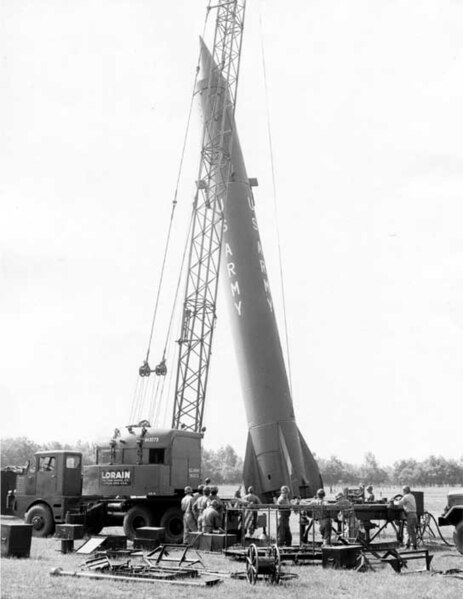The MGM-31A Pershing was the missile used in the Pershing 1 and Pershing 1a field artillery missile systems. It was a solid-fueled two-stage theater ballistic missile designed and built by Martin Marietta to replace the PGM-11 Redstone missile as the primary nuclear-capable theater-level weapon of the United States Army and replaced the MGM-1 Matador cruise missiles operated by the German Air Force. Pershing later replaced the European-based MGM-13 Mace cruise missiles deployed by the United States Air Force and the German Air Force. Development began in 1958, with the first test missile fired in 1960, the Pershing 1 system deployed in 1963 and the improved Pershing 1a deployed in 1969. The U.S. Army replaced the Pershing 1a with the Pershing II Weapon System in 1983 while the German Air Force retained Pershing 1a until all Pershings were eliminated in 1991. The U.S. Army Missile Command (MICOM) managed the development and improvements while the Field Artillery Branch deployed the systems and developed tactical doctrine.

Pershing missile (34.6 feet length, 460-mile range) and Redstone missile (69.3 feet length, 201-mile range)
West German Erector Launcher with ballistic shields
The PGM-11 Redstone was the first large American ballistic missile. A short-range ballistic missile (SRBM), it was in active service with the United States Army in West Germany from June 1958 to June 1964 as part of NATO's Cold War defense of Western Europe. It was the first US missile to carry a live nuclear warhead, in the 1958 Pacific Ocean weapons test, Hardtack Teak.
Redstone No. CC-56, Cape Canaveral, Florida, 17 September 1958
US Army field group erecting Redstone missile
Redstone early production (1953)
Preparations on 16 May 1958 for the first Redstone launch on 17 May conducted by US Army troops. Battery A, 217th Field Artillery Missile Battalion, 40th Artillery Group (Redstone); Cape Canaveral, Florida; Launch Complex 5






